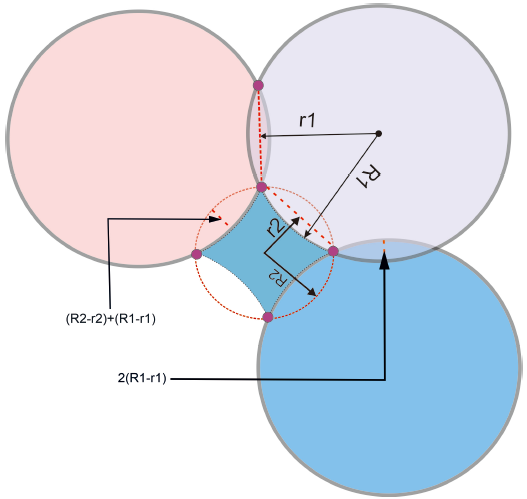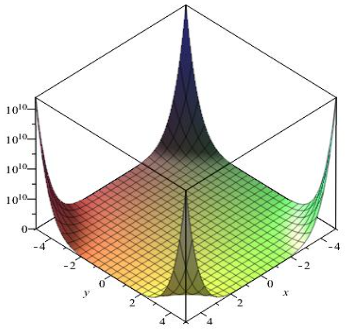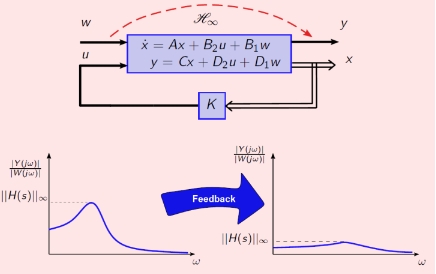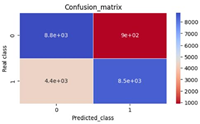H∞ hybrid control and MRD in a steel frame building subjected to excessive vibrations caused by the dynamic action of wind and earthquake
Abstract
The dynamic loads from earthquakes and winds can destroy lives, cause collapse in civil structures, and interrupt basic services provided to the population. In this scenario, structural designs must be developed to decrease the damage induced by these actions. The objective of this work is to design a hybrid controller based on the H∞ optimization via state feedback and the magneto-rheological damper (MRD) to mitigate the excessive vibrations of a three-story steel frame building, represented through the shear building model, subjected to the simultaneous dynamic action of wind and earthquake. All research is based on computational simulation, experimental research and results will not be addressed. In the numerical analysis, digital computer and MATLAB® software are used, and implemented codes generate the expected results based on the mathematical modeling. With the application of the H∞ control technique via state feedback, the displacements were reduced by 77%. With MRD this reduction was 79%. With the hybrid controller, this reduction was 100%. Thus, the verifications in relation to maximum displacements were met for NBR 15421:2006, NBR 8800:2008 and NBR 6118:2014. From the results, it is concluded that the hybrid controller proved to be more efficient and achieved the proposed objective. The exogenous inputs had zero influence on the behavior of the system output.
References
[1]Tominaga LK, Santoro J, Amaral R. Natural Disasters: Knowing to Prevent, 1st ed (Portuguese). Instituto Geológico; 2009.
[2]Bosse RM. Performance of TMDs in Buildings Subjected to Earthquakes (Portuguese) [Master’s thesis]. Escola de Engenharia da Universidade de São Paulo; 2017.
[3]García-Illescas MA, Alvarez-Icaza L. Model reduction of shear building models: A quantitative approach for master degrees of freedom selection. Engineering Structures. 2019; 179: 512-522. doi: 10.1016/j.engstruct.2018.11.019
[4]Ribeiro M. Numerical and Computational Analysis of a Wind-induced Structural Vibration Control System (Portuguese) [PhD thesis]. Universidade Federal de Juiz de Fora; 2018.
[5]Pandit AR, Biswal KC. Seismic control of multi degree of freedom structure outfitted with sloped bottom tuned liquid damper. Structures. 2020; 25: 229-240. doi: 10.1016/j.istruc.2020.03.009
[6]Chavarette FR, Lima RS de. Nonlinear dynamics, chaos and control of the Hindmarsh-Rose neuron model. Boletim da Sociedade Paranaense de Matemática. 2022; 40: 1-9. doi: 10.5269/bspm.47770
[7]Roefero LGP, Chavarette FR, Mishra LN. Linear Quadratic Regulator Applied to a Magnetorheological Damper Aiming Attenuate Vibration in an Automotive Suspension. Twms Journal of Applied and Engineering Mathematics. 2022; 12: 1189-1201.
[8]Vicente J, Chavarette F, Roefero L. Chaos Control via Mathieu-Van der Pol System and Linear Optimal Control Design with a Non-ideal Excitation and Parametric Uncertainties. Revista Internacional de Métodos Numéricos para Cálculo y Diseño en Ingeniería. 2019; 35. doi: 10.23967/j.rimni.2019.08.001
[9]Bandyopadhyay S, Parulekar YM, Sengupta A, et al. Structure soil structure interaction of conventional and base-isolated building subjected to real earthquake. Structures. 2021; 32: 474-493. doi: 10.1016/j.istruc.2021.03.069
[10]Brasil RMLRF, da Silva MA. Introduction to the Dynamics of Structures for Civil Engineering, 2nd ed (Portuguese). Blucher; 2015.
[11]Paz M, Kim YH. Structural Dynamics. Springer International Publishing; 2019. doi: 10.1007/978-3-319-94743-3
[12]Savi MA. Non-linear Dynamics and Chaos, 2nd ed (Portuguese). E-Papers; 2017.
[13]Chopra AK. Dynamics of Structures: Theory and Applications to Earthquake Engineering. Prentice Hall; 1995.
[14]Corbani S. Dynamic Elasto-plastic Analysis of Steel Structures Subjected to Random Earthquake Excitation (Portuguese) [Master’s thesis]. Escola Politécnica da Universidade de São Paulo; 2006.
[15]Associação Brasileira de Normas Técnicas. ABNT. NBR 6123. Forces Due to Wind in Buildings (Portuguese). ABNT; 1988.
[16]Carril CFJ. Numerical and Experimental Analysis of the Dynamic Effect of Wind on Metal Lattice Towers for Telecommunications (Portuguese) [PhD thesis]. Escola Politécnica da Universidade de São Paulo; 2000.
[17]Franco M. Direct Along Wind Dynamic Analysis of Tall Structures. Boletim Técnico; 1993.
[18]Associação Brasileira de Normas Técnicas. ABNT. NBR 15421. Design of Earthquake-resistant Structures—Procedure (Portuguese). ABNT; 2006.
[19]Brandão FS. Optimization of Synchronized Dynamic Attenuators for Vibration Control in Buildings Subjected to Seismic Excitation (Portuguese) [Master’s thesis]. Escola de Engenharia da Universidade Federal do Rio Grande do Sul; 2021.
[20]Kanai K. Semi-empirical formula for the seismic characteristics of the ground. Bulletin of the Earthquake Research Institute, University of Tokyo. 1957; 35.
[21]MATLAB 2022 version. Mathworks Company.
[22]Ogata K. Modern Control Engineering (Portuguese), 5th ed. Editora Pearson Prentice Hall; 2010.
[23]Ferreira DC, Chavarette FR, Peruzzi NJ. Linear matrix inequalities control driven for non-ideal power source energy harvesting. Journal of Theoretical and Applied Mechanics. Published online July 23, 2015: 605. doi: 10.15632/jtam-pl.53.3.605
[24]Trofino A, Coutinho DF, Barbosa KA. Improved H2 and H conditions for robust analysis and control synthesis of linear systems. Sba: Controle & Automação Sociedade Brasileira de Automatica. 2005; 16(4): 427-434. doi: 10.1590/s0103-17592005000400004
[25]Boyd S, El Ghaoui L, Feron E, et al. Linear Matrix Inequalities in System and Control Theory. Published online January 1994. doi: 10.1137/1.9781611970777
[26]Palma PHT. Experimental Identification and Active Control of Vibrations Applied to Intelligent Structures (Portuguese) [Master’s thesis]. Universidade Estadual Paulista “Júlio de Mesquita Filho”; 2007.
[27]Peres PLD. H2 Control and H: Characterization by Linear Matrix Inequalities (Portuguese) [PhD thesis]. Universidade Estadual de Campinas; 1997.
[28]Assunção E. Design of robust H2 controllers and H via LMI (Portuguese). In: Class notes from the H2 and H robust controller design discipline via LMI from the electrical engineering postgraduate course at UNESP (Portuguese)—Ilha Solteira. 2019.
[29]Spencer JRBF, Dyke SJ, Sain MK, Carlson JD. Phenomenological model for magnetorheological dampers. Journal of engineering mechanics. 1997; 123(3): 230-238. doi: 10.1061/(ASCE)0733-9399(1997)123:3(230)
[30]Tusset AM, Balthazar JM. On the Chaotic Suppression of Both Ideal and Non-ideal Duffing Based Vibrating Systems, Using a Magnetorheological Damper. Differential Equations and Dynamical Systems. 2012; 21(1-2): 105-121. doi: 10.1007/s12591-012-0128-4
[31]Wolf A, Swift JB, Swinney HL, Vastan JA. Determining Lyapunov exponents from a Time Series. Physica D. 1985; 16: 285-317. doi: 10.1016/0167-2789(85)90011-9
[32]Mohammadi S. Lyaprosen: MATLAB function to calculate Lyapunov exponent. University of Tehran; 2009.
[33]Rosenstein MT, Collins JJ, Deluca CJ. A practical method for calculating largest Lyapunov exponents from small data sets. Physica D. 1993; 65(1-2): 117-134. doi: 10.1016/0167-2789(93)90009-P
[34]Associação Brasileira de Normas Técnicas. ABNT. NBR 8800. Design of Steel Structures and Mixed Steel and Concrete Building Structures (Portuguese). ABNT; 2008.
[35]Associação Brasileira de Normas Técnicas. ABNT. NBR 6118. Design of Concrete Structures-Procedure (Portuguese). ABNT; 2014.
Copyright (c) 2024 Michael Dowglas de Gois Silva, Fábio Roberto Chavarette

This work is licensed under a Creative Commons Attribution 4.0 International License.











